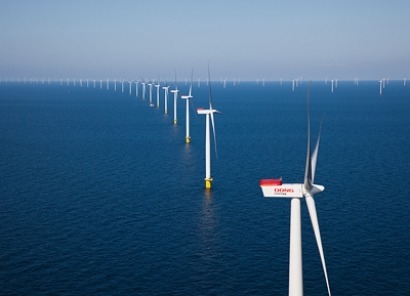
The second annual Cost Reduction Monitoring Framework (CRMF) report, delivered by the Offshore Renewable Energy Catapult on behalf of the Offshore Wind Programme Board, also finds that further reduction will need to come from the innovations in ‘balance of plant’, such as foundations, cables and substations. However, overall, the report provides strong evidence that the cost of energy from offshore wind continues to fall, having fallen through 2015 and currently remaining on track to deliver a target of £100 per megawatt hour by 2020. It also identifies forthcoming announcements on the timing and scale of future Contracts for Difference (CfD) auctions and long term capacity requirements as key enablers of further cost reduction.
The report has been released at the same time as the UK Parliament reviews the 5th Carbon Budget of the Committee on Climate Change, which projects that offshore wind costs will be below new nuclear and new gas plant by 2025. However, it warns that the investment in research and development and manufacturing industrialisation to deliver improvements will only come with greater visibility of future rates of deployment and market size as government sets out details of contracts for new offshore wind farms.
“The UK offshore wind industry continues to go from strength to strength and I’m delighted to see further evidence that costs are continuing to come down” said UK Energy Minister, Andrea Leadsom. “Reductions in cost will mean better value for hard working bill payers, and are essential if this industry is to thrive.”
Benj Sykes, industry co-Chair of the Offshore Wind Industry Council, added that there has been excellent progress in reducing the cost of clean energy from offshore wind. The industry is fast-tracking adoption of new innovation in turbine design and in project operations, putting the UK ahead of the curve in efforts to bring down the cost of offshore wind. The industry is very confident that it will be able to not only reach the £100/MWh milestone, but go beyond this to become fully cost competitive with other generation technologies.
Of the 13 cost reduction indicators in the report, all but one are ahead or on target with the milestone set in 2015. The only measure that is behind target is growth and scale. Findings show that industry has already adopted innovations that were not previously expected to significantly drive cost reduction until 2017, particularly in the areas of turbine design and project maintenance.
The report also assessed the degree of confidence that the industry has in delivering further cost savings. It found high confidence of delivery in eight of the indicators, with medium confidence in a further three, to achieve the milestone of £100/MWh in 2020. This has in turn brought a commitment from the government to work with industry on agreeing a new, ambitious cost reduction target for the 2020s.
For additional information:

